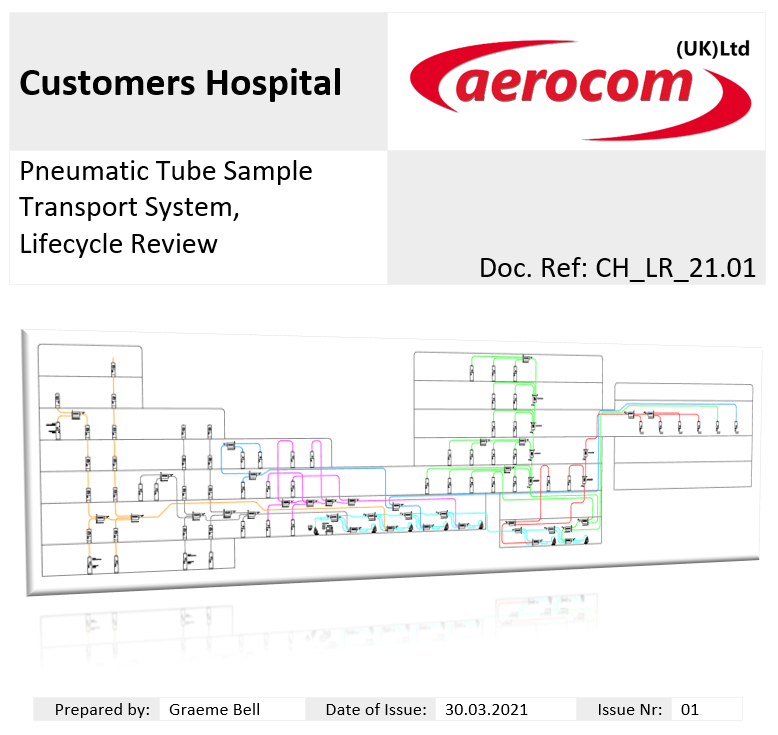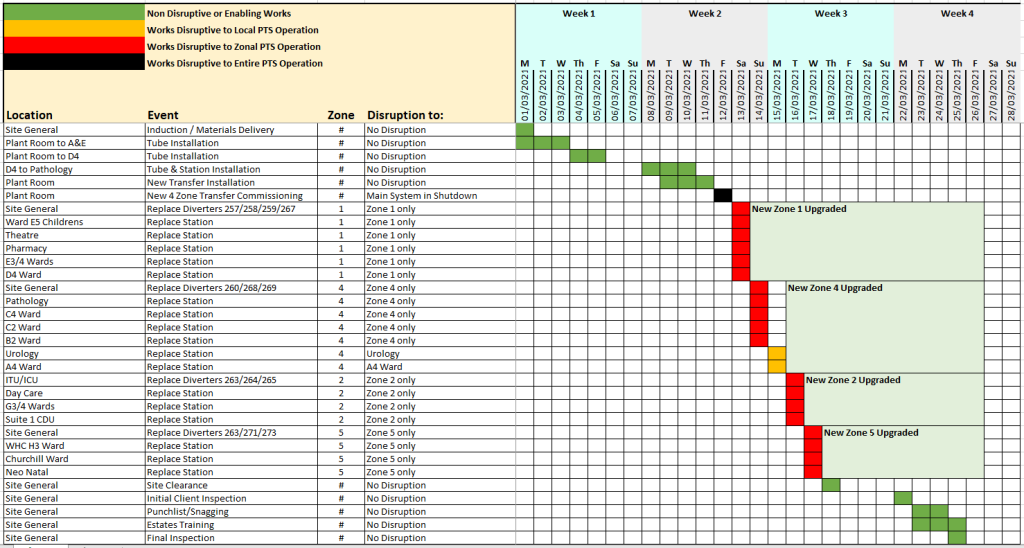The Lifecyle of a Pneumatic Tube System
The lifespan of a pneumatic tube system, like any other electro-mechanical device, depends more on usage than on age. While most manufacturers, including Aerocom, suggest replacing electrical equipment after about 10 years of average use, it’s not uncommon to find Aerocom pneumatic tube systems in hospitals that are over 20 years old and still functioning well. This longevity is largely due to the system’s upgradability.
Technology evolves rapidly, and systems installed around the millennium may seem outdated compared to today’s technology. However, the Aerocom AC3000 system can still operate efficiently because modern software is compatible with both the original and the latest equipment. This allows for a seamless integration of old and new technology, making it easy to update the system with minimal disruption. Consequently, older stations can be replaced with newer ones without a complete overhaul, ensuring continued efficiency and reliability.
10 Year Review
Throughout the lifecycle of a PPM-supported pneumatic tube system, Aerocom produces system reports biannually. During each service, consumable parts are replaced and recorded in site-specific documentation.
Accurate record-keeping allows us to audit and monitor the system’s overall performance, equipment condition, and reliability. When an installation reaches the 10-year mark, our design manager conducts a thorough review and provides an in-depth analysis of the system’s performance over time.
Lifecycle replacement is not a strict target. Some fully serviced systems with light usage may require no action even after 10 years. Conversely, at extremely busy sites, we might need to advance the review to the 8-year mark. Each site is unique and requires a tailored approach.

The pneumatic tube system finances its replacement
The return on investment from automating repetitive delivery tasks is substantial. We estimate that a major hospital’s pneumatic tube system pays for itself within one year of use. By calculating the time it would take for staff to manually walk deliveries, multiplied by the number of portering staff needed to cover the same workload 24/7/365, we can demonstrate the efficiency of the pneumatic tube system. While this might seem speculative, the data clearly shows that on a large and busy site, the system can save millions of pounds over its lifecycle compared to the initial and running costs.
Example of an Aerocom Major Hospital Installation ROI over 12 years

Even if our estimation is 100% over-inflated, we are still seeing huge sums of money returned on investment, the point is the reliable old pneumatic tube system savings will all have been used to finance other necessary services and go unbeknown as the contributor.
Evolution
Another important reason to replace an older pneumatic tube system is to assess its evolution over the years, both in terms of physical changes at the site and any performance shortfalls due to expansions. As sites often expand or reorganize area usage over time, extensions to the system can accumulate and impact performance.
For example, the most used Aerocom hospital pneumatic tube system in the UK is located on the south coast. When the hospital first opened, the system handled around 1100 carriers per day to and from pathology. Ten years later, traffic flow has increased by 50%, while the system has only been extended by 11% in terms of the original number of stations. Although the modification was planned to boost capacity, the dramatic increase in traffic flow exceeded expectations, surprising even the pathology staff who manage the carriers.
Now that the system is due for replacement, we have the opportunity to suggest innovations from our evolved product range to alleviate the repetitive strain on lab staff and further enhance the infrastructure for better service. Replacing lifecycle-exhausted pneumatic tube systems not only allows for performance improvements but also enables the integration of advanced equipment. Robotic enhancements are now available to automate or optimize system operations, and new station models offer ergonomic benefits for users.
How disruptive is replacing a pneumatic tube system?
If it’s an existing Aerocom AC3000 system in many instances we will only need to shut down for a day or so to replace the transfer and key plant room equipment. The latest version of AC3000 software can bridge decades of previous versions, so once we have the infrastructure changed, we simply isolate and replace stations one by one with the rest of the system in full service. We will also work out of hours to keep downtime and disruption to a minimum.

